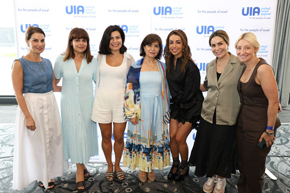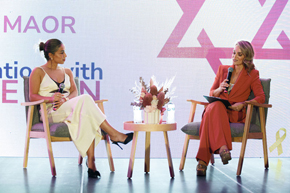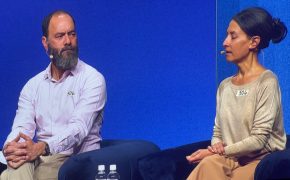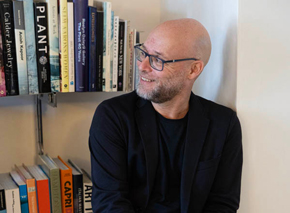From Australia’s Jewish Past
Walter Diesendorf – well-respected and acknowledged for his work on the Snowy River Hydro-electric Scheme

Walter Diesendorf
Walter was born in Vienna on 14 December 1906, the son of Jewish parents, Eljukim Wolf and Henie. He attended the Technical University of Vienna, where he qualified in engineering in 1929. He attained a doctorate in technical sciences in 1934 and worked in industry. When Austria was annexed by Nazi Germany in 1938, Walter emigrated to Australia and settled in Sydney. He was followed soon after by his fiancée, Dr Margaretha Mate, for whom he had obtained a visa, and they married on 22 December 1939. They had two sons, scientists Mark, an academic and environmentalist and John, an electrical engineer. Margaretha was a teacher and poet, and Walter quickly established himself in the local engineering community. During World War II he planned the development of Sydney’s 33,000-volt underground cable network. He subsequently designed transmission works for a major expansion of power output from the New South Wales coalfields. A ‘sleeves-up’ man, ‘he stoked boilers and drove bulldozers at Bunnerong Power Station’ to keep city lights burning during postwar strikes. After the war, he designed transmission systems for a major expansion of the power industry in New South Wales.
With the establishment of the Electricity Commission of New South Wales in 1950, Walter joined the Snowy Mountains Hydro-electric Authority as a system design engineer and, in 1958, was appointed Senior Executive Engineer for electrical and mechanical activities. His joint paper “The 330kV Transmission System in New South Wales” was awarded the institution’s electrical engineering prize and was instrumental in adopting the 330,000-volt system in Australia. At that time, the maximum voltage used worldwide was generally 200,000 volts. Walter lived at this time at Cooma in the Snowy Mountains. Margaretha, now known as Margaret and their two sons lived in Eastwood and would visit their father to enjoy mountain walking and skiing holidays.
Walter was a member of the Institute of Engineers, Australia, of which he became a Fellow in 1957; the Société des Ingénieurs de France and the Conference Internationale des Grands Reseaux Electriques a Haute Tension. On his retirement from the Snowy Mountain Authority in 1967, he became a Senior Lecturer in electrical engineering at the University of Sydney. Between 1970 and 1971, he was visiting professor at the Rensselaer Polytechnic Institute in Troy, New York State. His book, Overvoltages on High Voltage Systems (Troy, 1971) became a standard teaching text.
Walter was diagnosed with cancer in 1973 and died on 29 December 1975 at Camperdown.
At the time of Walter’s illness, Margaret’s poem Light, written in 1981, won the Borestone Mountain Poetry Award for the best poem in the English language, an award that she was to win again in 1976 with The Hero.
An excerpt from the poem Light written in 1981
“There is much about light that we don’t understand:
the way it gathers in a man suddenly
to shine with the brightness of ten thousand watts
from his eyes…
From 1946 onwards, Margaret made contributions to the letter columns of The Sydney Morning Herald on feminist and social issues, which earned her the title of “the Conscience of New South Wales”.
Among her projects were successful campaigns to increase Australian research into poliomyelitis and to cease the use of X-ray machines in shoe shops. ‘The Kiss’ by Gustav Klimt like many of Margaret’s poems, was inspired by paintings.
John, writing of his parents’ achievements, compared his mother’s gifts to those of his father, Walter the electrical engineer:
“The lives of Walter and Margaret Diesendorf have brought light to Australia: physical light and spiritual light, with the energy of water and the sun, and with the power of love for humanity.”
The AJHS acknowledges the following references in the preparation of this story:
The Australian Dictionary of Biography – Brad Collis; Wikipedia, The Australian National University

The Australian Jewish Historical Society is the keeper of archives from the arrival of the First Fleet in 1788 right up to today. Whether you are searching for an academic resource, an event, a picture or an article, AJHS can help you find that piece of historical material. The AJHS welcomes your contributions to the archives. If you are a descendant of someone of interest with a story to tell, or you have memorabilia that might be of significance for the archives, please make contact via www.ajhs.com.au or stories@ajhs.com.au.







